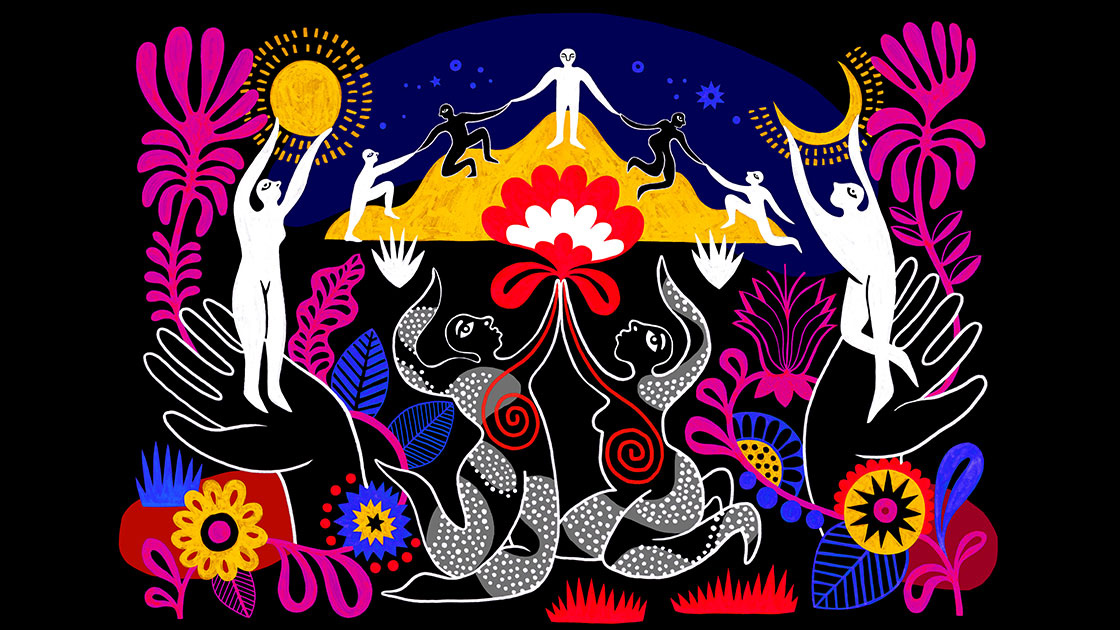
© Sophie Bass. (Click image for larger version)
A festival of online works that explore care in the wake of 2020 – a mixed bill of films and podcasts…
Clair Cunningham and Luke Pell: The Choreography of Care
Emily Robinson Dance: Seedlings of Time
Natasha Gilmore / Barrowland Ballet: Strings
Elsabet Yonas: Sisterhood
Krystal S. Lowe and Matthew Gough: Rewild/Ailwylltio
Joy Alpuerto Ritter and Lukas Steltner: rOOms
★★★★✰
London, The Place
27 – 30 January 2021
Overview details and videos post opening run
www.theplace.org.uk
In a touching and inspiring weekend of audio works, panel discussions, films, a Zoom workshop and live performance, dance artists respond to how we care for each other. The Place’s mini-digital festival is a timely reconsideration of care following the year we’ve just had. Has the pandemic made us more caring or less? Is self-care indulgent or essential in order to care for others? Can we care too much or too little and how do we express care?
In a meditative and poetic conversation with her long- term collaborator Luke Pell, Claire Cunningham discussed what care has meant in her own work, how it manifests in performance processes and interactions with other artists. The eloquent and generous musing of both created a podcast that is not only riveting to hear but that positions care as an essential tool for survival as well as artistic efficacy. Talking about her experience as a disabled artist at the receiving end of care and as a choreographer who works with other disabled and deaf artists, Cunningham emphasises how the word carries loaded meanings. She questions the association for many people of care as something that happens to you, is done to you, a well intended act that makes you feel passive, dependent and patronized. Pell on the other hand, looking back at his past reflects on the lack of care he felt as a gay man growing up in Thatcherite Britain in the wake of AIDS/HIV.
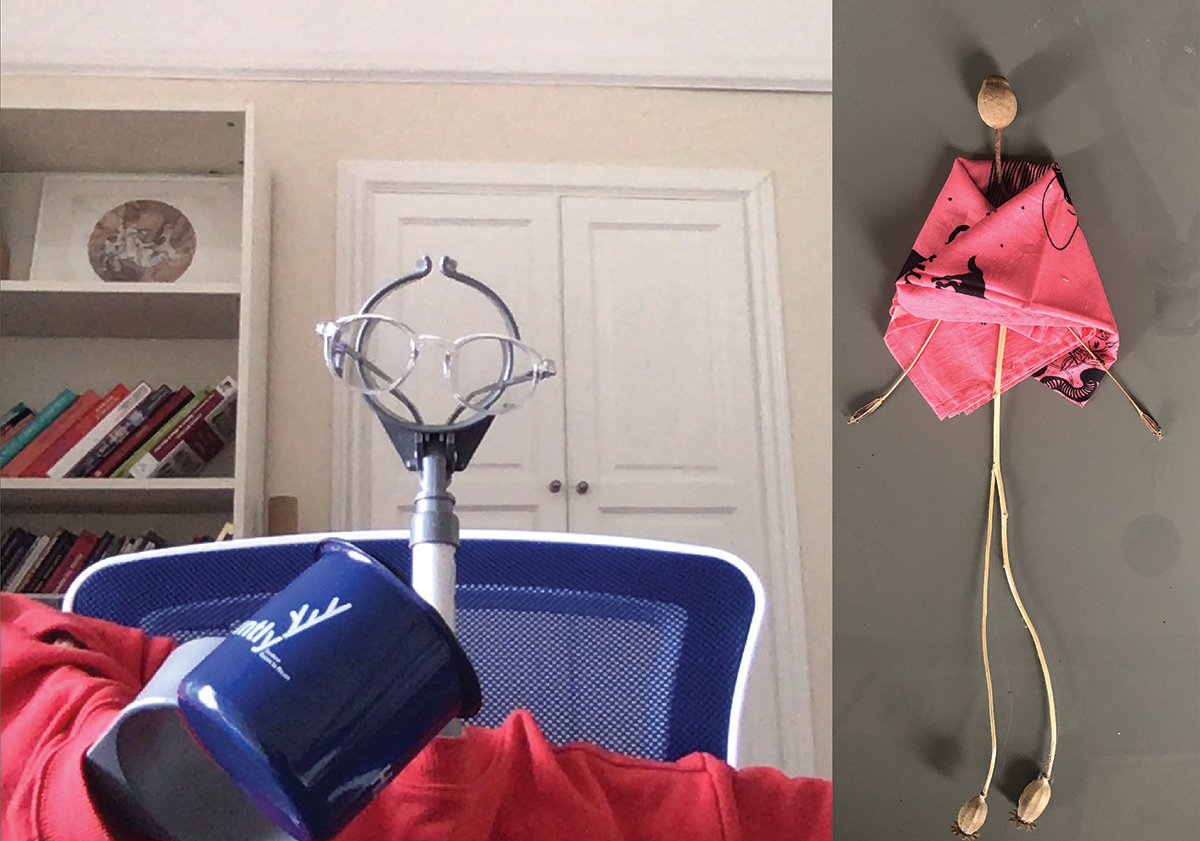
© Claire Cunningham and Luke Pell. (Click image for larger version)
Such negative experiences of care have made both artists adamant to establish best practices of care in all aspects of making and performing work which is why they are co-curating the Choreography for Care Symposium in June this year. Shaping key ideas for the symposium they define care as reciprocal, as something active and enabling, as honouring and respecting other artists – valuing what each individual brings to a work. Cunningham elucidates on meanings of care through specific reference to her work such as Guide Goods (2014) and Thankyou Very Much (2019). She talks about the importance of how to treat sensitive material in interviews, to establish trust with participants and to honour the stories they share. Pell and Cunningham both agree this is realised through investing time in people. Care is about making sure that artists feel safe both in the rehearsal space and performance venue, for example the choice of space and whether it is suitable for the needs of the performers which also has implications for the design aspects of a show; or care in how the audience is positioned in relation to the performer, whether that means an intimate setting such as in Guide Goods or a larger space that still allows for connections to be made between both. Finally, moving away from thinking about care as always associated with soft and gentle forms or as gendered, both artists question care as criticism, the importance of being in dialogue about something because we care enough.

© Emily Robinson. (Click image for larger version)
The mixed bill of four short films embodies some of Cunningham and Pell’s definitions of care. Seedlings of Time explores a reciprocal, caring relationship between Welsh based choreographer Emily Robinson and her father explored through their mutual interests of dance and gardening. Filmed in her father’s garden over last year’s lockdown, Robinson establishes positive new connections with her father through touch, exchanges of weight, balances and conversations. As they interact, they move beyond any potential physical awkwardness because of listening and responding to each other. The camera pans between the pair dancing and the backdrop of seedlings and infant plants. Filmed over several months we see developments both in the dance material as father and daughter become stronger and more confident and in the growth of plants. Sustained by careful nurturing, the relationship between father, daughter and garden flourishes.
Similarly in Natasha Gilmore’s work Strings care is invested in the mutual support and exchange between professional dancers and a group of children. Performed by Gilmore’s Glasgow based company Barrowland Ballet in collaboration with children who have learning difficulties and autism, the dancers take their cues from the children, empowering them in a safe performance space surrounded by frames of connecting string. As they play with the string or follow its many directions, the children develop confidence in touch and movement. They become expressive and exuberant, dancing more freely around the space, taking turns to lead the action. Mirroring the children the dancers interact with insight and creativity provoking playful bursts of energy and joy.

© Blair Young. (Click image for larger version)
Significant in the next two films is their focus on nature as a setting which promotes well-being and aliveness. London based hip hop artist Elsabet Yonas explores the meaning of care through non-verbal conversation, touch, listening and presence. Sisterhood performed by Yonas and friends Robia Milliner and Nicole Green captures the mutual love and intimacy amongst three black women and their celebration of black joy. Sometimes we see them laughing and bantering, gesticulating strongly and languorously playing in the long grass. An oozing, vibey sound-track by Charlie Shilinford captures warm, carefree days of summer in the park, with close-ups of flowers, trees and the sky. However, the music changes and the women morph into structured, street dance sequences where limbs tense and movements become punctuated and aggressive. Bursts of anger or expressions of pain are soon soothed away with the support of the group and the healing energy that exudes from each woman.
Surrounding herself in nature as she connects with precious childhood memories, choreographer, writer and poet Krystal S. Lowe dances acts of self-care as she rediscovers the child she once was. Climbing trees, wading through rivers, running through long grasses, smelling flowers, she re-wilds herself in an act of liberation, freeing herself from societal expectations and pressures. Rewild/Ailwylltio is a visual poem created and spoken by Lowe as she dances through mind-blowingly beautiful countryside, filmed by Matthew Gough, interacting lovingly with trees and plants that accept her for who she is. Rich in imagery and delivered forcibly, her poetry evokes a woman who resists being tamed by society, and through her act of self-care shows others how to do the same.

© Joy Alpuerto Ritter / Lukas Steltner. (Click image for larger version)
While forms of care are less explicit in rOOms, the live interactive digital show by Joy Alpuerto Ritter and collaborator Lukas Steltner raises questions about how we can use technology to interact productively with an audience. The two dancers filmed in their apartment over lockdown undertaking a range of different activities, express feelings of joy, boredom, isolation and doubt. Mundane, quotidian actions fill long days – beauty rituals, dressing up, eating, getting drunk, dancing inanely. Intense performances by Steltner and Ritter vividly describe the familiar antics of a couple in lockdown. It’s a clever, creative exploration of how a digital performance might work, offering different perspectives from four cameras. We’re invited to influence the narrative of their performance by making choices through polls that pop up on our Zoom shared screen: when do we want them to start; should they drink red or white wine; have we been feeling happy recently? r00ms reflects on the technology of Zoom as one that allows voyeurs to enter private, intimate spaces and be greeted as friends. While there’s care in how we are treated as an audience, the invasion on the performers’ personal territory seems worryingly uncareful!












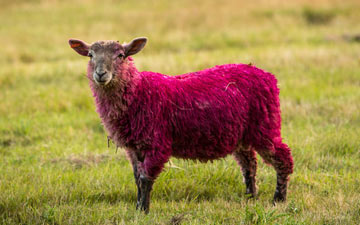
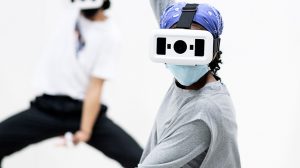
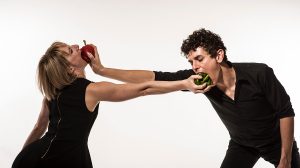
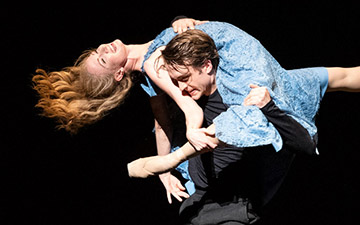

You must be logged in to post a comment.